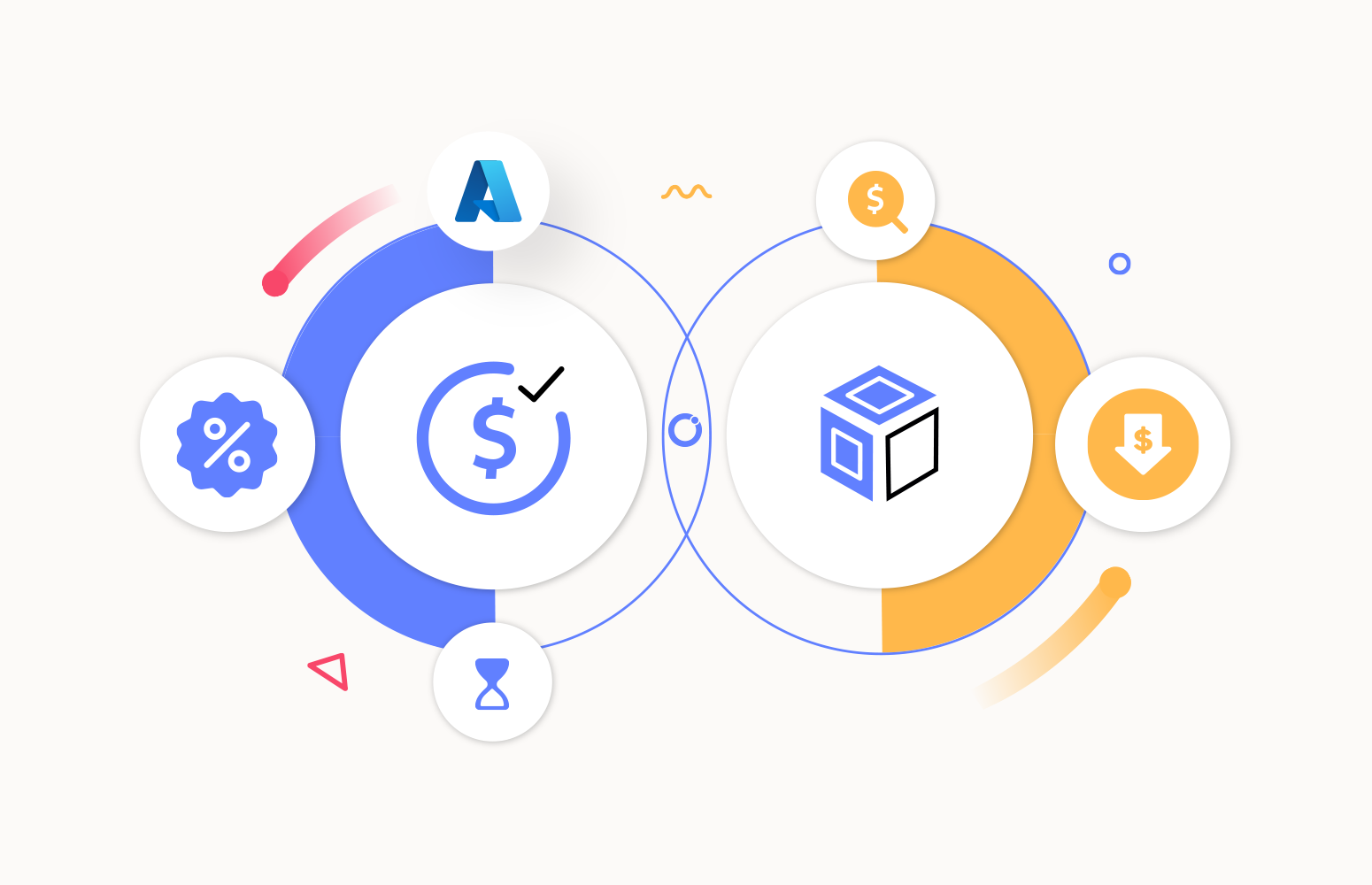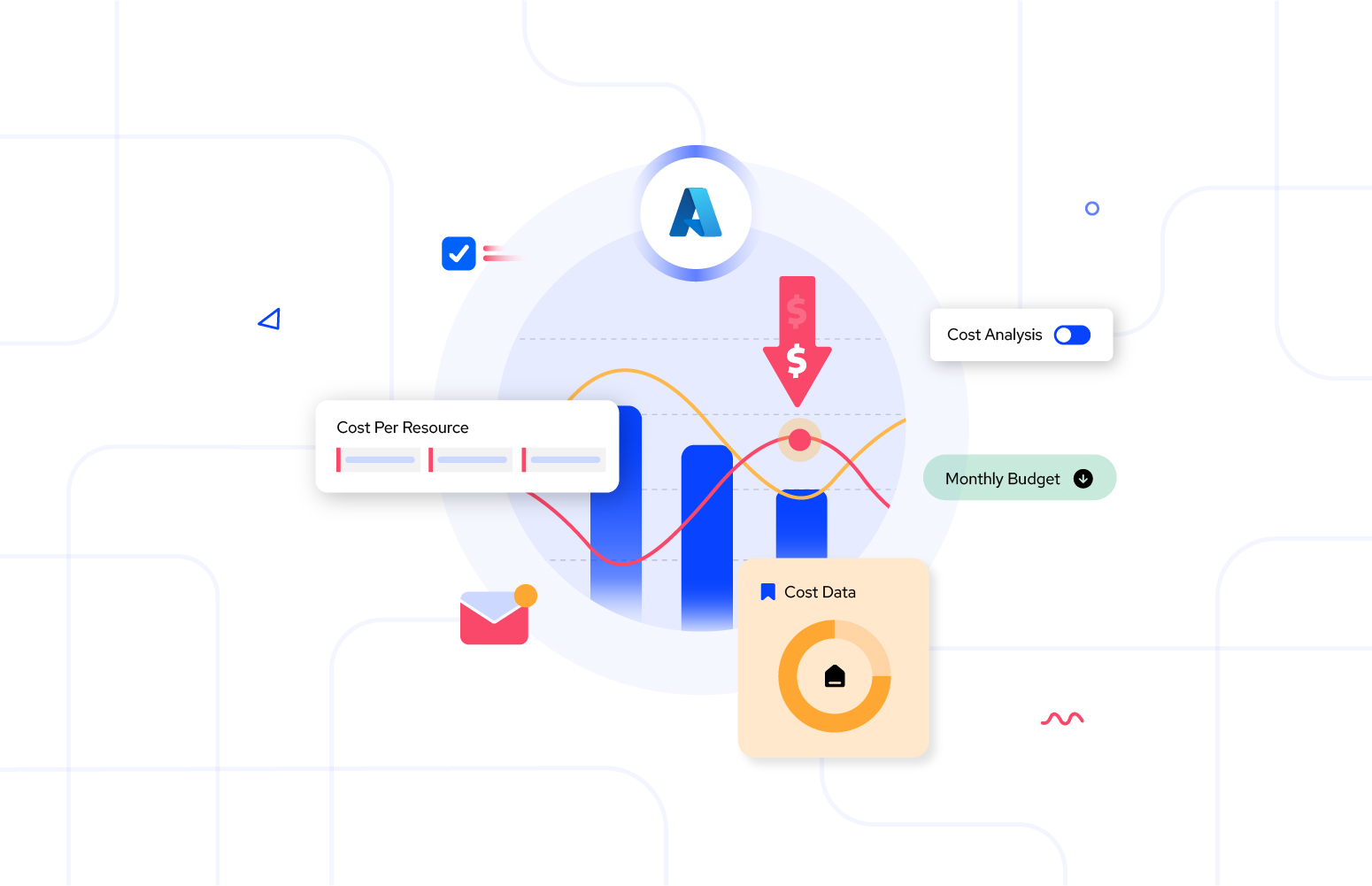Introduction
As businesses increasingly migrate to the cloud, understanding the intersections of data transfer expenses is very important. In this article, we’ll break down what Azure Data Transfer Costs entail, explore various types of data transfers, explore Azure Bandwidth pricing, identify the possible factors influencing data transfer costs, and some strategies for optimizing expenses.
What is Azure Data Transfer Cost?
Azure Data Transfer Cost refers to the charges associated with moving data within or across Azure regions. It’s a crucial component of cloud computing economics, impacting operational budgets and resource allocation. Data transfer is measured in terms of data volume and traveled distance, with rates varying based on the type and direction of transfer. This includes data transfer that may be used within any Azure service and specifically declared in their pricing model, as for example the data transfer cost for geo-replication of a blob storage account, which is charged per GB or TB of data.
Types of Data Transfers
There are several Data transfer types in Azure, which depend on the network topology, the services and operational model you chose for your Virtual Datacenter:
- within Virtual Networks (VNET), the most important charges are with VNET Peering, which incurs costs both within the same Azure Region and across different regions, as per the pricing model explained here.
- across Azure Availability Zones, when spanning two or more zones (aka datacenters) to make your workloads and services more reliable.
- and between Azure Regions, when designing a disaster recovery strategy which will restore your mission critical operations in a different region.
Depending on the region your workloads are located, and the type of services they use, several aspects of the architecture will put you in front of choices that affect how traffic is treated, hence if any data needs to be transferred with applied charges.
Another factor influencing data charges is the configuration and choices of your BCDR (Business Continuity and Disaster Recovery) solution. Whether you opt for replication across zones or regions, utilize Azure Site Recovery, or third-party products, and decide on local, zone-redundant, or geo-redundant backup storage, all play a role. While these charges are typically minimal relative to the cost of the associated service, certain configurations can unexpectedly lead to significant data transfer, resulting in observed spikes in charges. It’s crucial to carefully consider these aspects to avoid any surprises in your billing, but most of all, to consider your BCDR strategy as a whole, and check the choices on all fronts, as in my experience many times companies don’t realize they are making redundant choices that don’t really improve their RPO/RTO but that definitely increase the monthly bill.
Azure Bandwidth Pricing
Azure data transfer costs span various components, each with its own pricing structure, but bandwidth cost can be summarized as follows:
1. Egress and Ingress within the Same Region
- This refers to data transfer between Azure services within the same Azure region.
- Both egress (data leaving Azure services) and ingress (data entering Azure services) incur costs.
- Pricing is typically lower compared to inter-region or inter-continental transfers.
2. Egress and Ingress between Regions within a Continent
- When data is transferred between Azure regions located within the same continent, egress and ingress charges apply.
- The cost may vary based on the distance between regions within the continent and the pricing and currency of the source/target regions.
3. Egress and Ingress between Continents
- Transferring data between Azure regions located in different continents incurs egress and ingress charges.
- These charges are generally higher due to the longer traveled distance and potentially involving different network providers.
- There is also geographical latency to consider when making cross-continental strategies.
4. Data Transfer between Availability Zones
- Azure Availability Zones provide high availability within a region by distributing resources across multiple zones.
- Data transfer between availability zones within the same region may incur costs, depending on the Azure service and configuration.
5. Data Transfer across Different Azure Services (Varies by Service)
- Data transfer costs can vary based on the specific Azure services involved.
- Some services may offer free or discounted data transfer within the Azure ecosystem, while others may incur standard egress and ingress charges.
- Pricing structures may differ depending on the type and volume of data transferred, as well as any associated network traffic management features.
Understanding these components is essential for effectively managing Azure data transfer costs and optimizing resource utilization within your cloud environment, and my recommendation is to always check the pricing model page of the chosen service for “collateral” charges, such as data transfer, or transactions.
Factors Influencing Azure Transfer Costs
Several factors play a crucial role in influencing Azure Transfer Costs
- Data Volume: The amount of data being transferred significantly impacts costs. Larger data volumes incur higher charges compared to smaller ones.
- Transfer Frequency: Frequent data transfers can accumulate costs over time, especially if they occur on a regular basis. Understanding the frequency of transfers helps in estimating expenses accurately (such as with Azure Site Recovery replication).
- Data Location: The geographical location of data centers and regions affects transfer costs. Transferring data within the same region typically incurs lower costs compared to transfers across regions or continents.
- Service Tier: Different Azure service tiers may have varying data transfer pricing structures. Higher-tier services might offer benefits such as reduced transfer costs or bundled transfer allowances (as, for example, storage tiers with included transactions and transfers).
- Data Redundancy Settings: Any redundancy option for data storage impacts transfer costs. Redundant storage options (e.g., geo-redundant storage) may incur higher transfer costs due to replication across multiple locations for enhanced durability.
Understanding these factors empowers companies to make informed decisions when architecting their cloud solutions. By optimizing data volume, transfer frequency, location choices, service tiers, and redundancy settings, you can effectively manage Azure Transfer Costs and optimize your cloud bill. It’s essential to strike a balance between performance requirements and cost-efficiency to achieve the best outcomes for your cloud deployments, making sure your efforts are not duplicated just because two different teams designed the backup and disaster recovery strategy!
Strategies for Optimizing Azure Data Transfer Costs
To mitigate data transfer expenses effectively, a few cost saving strategy may help you:
- Data Compression: Utilize compression to reduce the size of data before transferring it. Compressed data requires less bandwidth, resulting in lower transfer costs.
- Archiving: Archive infrequently accessed data to lower-cost storage solutions, such as Azure Blob Storage Archive or Azure Archive Storage.
- Partitioning: Partition large datasets into smaller segments to minimize data transfer requirements. By transferring only the necessary partitions, you can optimize costs while maintaining data accessibility.
- Offloading Cold Storage: Move cold or rarely-accessed data to cost-effective storage options like Azure Blob Storage Cool or Azure Blob Storage Archive.
- Location Optimization: Store data closer to where it’s needed by utilizing regional storage options. This minimizes the distance data needs to travel, reducing transfer costs and latency.
- Utilizing Regional Storage: Leverage Azure regional storage for local access to data, avoiding inter-region data transfer fees.
- Geo-Replication: Implement geo-replication for disaster recovery purposes. By replicating data across geographically dispersed regions, you can ensure data availability while minimizing transfer costs. But make sure your workload is not over-protected.
- Leveraging Azure CDN: Utilize Azure Content Delivery Network (CDN) to cache and deliver frequently accessed content closer to end-users. This reduces the need for data transfers from origin servers, optimizing costs and improving performance.
- Selecting Cost-effective Azure Services: Choose Azure services that offer cost-effective data transfer options for your specific workloads. Compare pricing structures and features to identify the most efficient and economical solution.
- Automating Transfer Processes: Implement automation tools and scripts to schedule and optimize data transfers. Automating repetitive tasks helps reduce human error and ensures efficient use of resources, ultimately lowering costs.
By implementing these strategies, you can mitigate data transfer expenses in Azure while maintaining your chosen balance of performance and reliability. It’s essential to regularly review and adjust these approaches based on the evolving requirements and changes in Azure service offerings and in your own workloads.
Conclusion
In conclusion, optimizing data transfer costs in Azure involves strategies such as data compression, archiving, and partitioning, alongside leveraging location optimization, geo-replication, and Azure CDN, while also selecting cost-effective services and BCDR strategies, and automating transfer processes to efficiently manage expenses. Mastering Azure Data Transfer Costs is essential for optimizing cloud expenses and ensuring operational efficiency. By understanding the nuances of data transfer, you can implement strategic measures to minimize costs while maximizing the value of their cloud investments.







